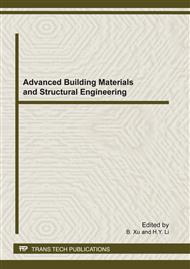p.521
p.526
p.532
p.537
p.541
p.547
p.552
p.557
p.561
Modeling Simulation and Optimization Study of Fresh Seafood Inventory Ordering Policies Based on Witness
Abstract:
It is possible to reduce the inventory cost by choosing the proper ordering policies. Considering the distinctive nature of perishable products, it is much more important to control the inventory levels properly. In this paper, we select the fresh seafood as the object of our study and build a simulation model based on Witness to analyse the inventory cost. In the model, we consider constraint conditions such as replenishment lead time, price discounts and so on. We also analyse the variation trends of total inventory cost together with the changes of parameters in three models with different ordering policies and obtain the parameters of the optimum policy by comparing the cost in that three models.
Info:
Periodical:
Pages:
541-546
Citation:
Online since:
February 2012
Authors:
Keywords:
Price:
Сopyright:
© 2012 Trans Tech Publications Ltd. All Rights Reserved
Share:
Citation:


